Flower growers are familiar with the situation when, after the formation of the adenium crown or when the plant is damaged by rot, cuttings remain that are a pity to throw away. Especially if it is a rare variety. In these cases, there is a simple and reliable way to preserve the plant - propagating adenium by cuttings.
Propagation of adenium by cuttings
When is the best time to cut adenium?
To achieve success in rooting cuttings, the most favorable period will be the height of summer, when it is easy to create optimal conditions in the form of a large amount of sunlight and heat. This will avoid additional heating and lighting of the plantings.
But if after spring pruning there are healthy and strong cuttings left, also from a varietal plant, then they can be used to propagate adenium at home.
Substrate for rooting cuttings
Rooting will be successful if you use soil that has good air permeability.
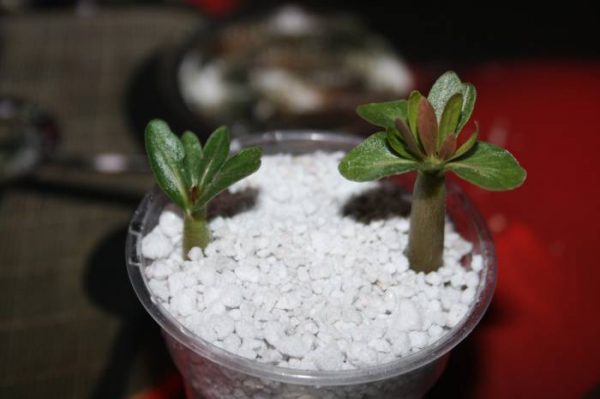
Rooting in perlite
There can be several soil options:
- River sand - 2 parts;
- coconut fiber - 2 parts;
- perlite - 1 part.
or
- perlite – 3 parts;
- coconut fiber or sphagnum moss - 1 part.
or
- in pure perlite, vermiculite
Advice! You can add a little vermiculite to any soil mixture, where it is not available.
Preparation of cuttings
The supplier of cuttings can be a healthy, mature plant in the active growing season.
To cut the cutting, use a sharp knife or blade so that the edges of the cutting are smooth, without torn areas, without damaging the plant tissue. The instrument must be disinfected.
The average size of cuttings for successful rooting is 10–15 cm, but based on practice, under optimal conditions, both short branches of adenium (3–5 cm) and longer ones (15–20 cm) take root.
The lower part of the cutting is freed from leaves. The leaves are left at the top, as they take part in activating processes in the cutting, including the formation of roots. Without leaves, rooting occurs with frequent rotting. Leaves that the cutting cannot support will fall off on their own.
Important! The juice of indoor adenium is poisonous, so it is recommended to wear gloves when caring for the plant.
The cut must be dried until the juice stops secreting. When dried for a long time, young, thin cuttings become lethargic and the leaves fall off. This leads to rotting of the planting material. Therefore, the optimal time for drying the cut in a dry room at a temperature of +22°...+24°C for cuttings:
- up to 5 cm – 1-2 hours;
- from 5 to 10-12 cm – no more than 4-5 hours;
- for cuttings more than 13 cm with a stem diameter at the cut site of more than 1 cm - up to 24 hours.
The cut of the cutting can be treated with a root former, for example, such as Ribav-extra or Zircon. They are good because they do not contain vitamin supplements and fertilizers, which cause rotting of the cuttings. But even without the use of a stimulant, the rate of root formation does not decrease much.
As practice shows, treating sections of adenium planting material to prevent rot with special means does not bring any tangible results.
Rooting cuttings in substrates
To root cuttings in the substrate, choose a medium-sized pot with breathable soil. The cuttings are buried 4-6 cm.
Important! To create optimal conditions for root formation and prevent the soil from drying out above the cuttings, it is necessary to create a greenhouse.
You can cover the cuttings with translucent film, a plastic bottle or a transparent disposable cup.
The greenhouse is placed on the south window, shading it from direct sunlight.
An important condition for caring for adenium cuttings is keeping the soil evenly moist. The substrate should not be damp or dry.When the soil mixture dries out, moistening is done with soft, settled water, without any additives that will only contribute to the rotting of the cuttings.
Roots actively develop in a room at +25°...35°C. At lower water or soil temperatures, the time for root formation increases and the likelihood of rotting of the cut increases. In cool weather, additional heat is needed. Heated mats or lamps are suitable for this.
When caring for a greenhouse, you cannot do without ventilation, which is necessary no more than once every 3-4 days.
At home, the plant forms roots in 0.5-2 months. A sign of the appearance of roots in a plant is the newly appeared leaves. Next, the cuttings can be transplanted to a permanent place.
Rooting in water
No less popular is the method of rooting cuttings in water. To do this, use filtered soft water. You can add 1 drop of root former to 150–200 ml of water.
On the cut, you can make cuts in the form of a cross, activating root growth. It is necessary to keep the water in the container constantly warm. The container with the cutting is placed in a warm place, heated if necessary. As water evaporates, add water and replace it completely once every 7 days.
Thick shoots, more than 12 cm long, form roots in 12–16 days if all conditions are met.
Adenium cuttings obtained from seedlings take root best in water.
Cuttings from adult adenium take longer to form roots - about 1 month. After rooting, seedlings are transplanted to a permanent place in the ground for further cultivation.
Possible mistakes
The main problem with cuttings is rotting of the cuttings. Treatment in this case is ineffective.The cuttings are cut to healthy tissue and all procedures for preparation, rooting and care are repeated.
- The main reason for failure is the temperature in the room is not high enough for root formation, especially at night, which should not fall below +25°C. The average daily temperature when rooting cuttings should be above +30°C.
- The second reason for rotting of planting material is lack of lighting. With insufficient lighting, vital processes in the plant slow down, and combined with low temperatures, they stop altogether, and the process of rotting begins.
Propagation of adenium by seeds
If you need to get a lot of plants, then it is better to propagate adenium from seeds.
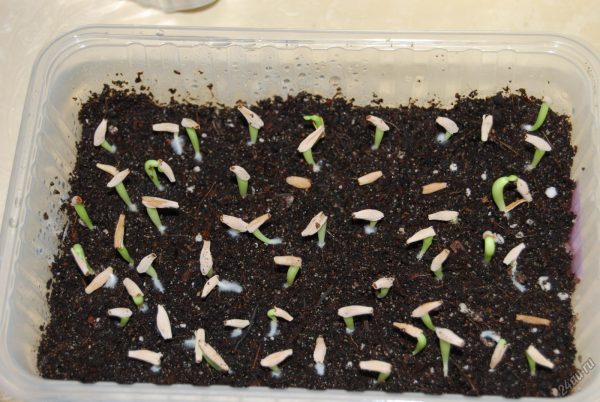
The seeds have already sprouted
Shoots appear already on the 3rd day after sowing. The prerequisites for this are:
- Ambient temperature +30°С…+35°С, heating is used.
- Soil air permeability.
- Moderate watering.
- Long-term illumination, 16 hours minimum.
The seeds are not soaked before planting; they are immediately buried in the soil to a depth of at least 10 mm.
Before planting, the soil is disinfected with a weak solution of potassium permanganate. The composition of the planting soil is 50% earthen mixture for cacti or succulents, 50% raising agents such as perlite, river sand, charcoal. This soil is well structured and does not compact after watering. Charcoal disinfects the environment around the roots. The container with the crops is covered with film, creating increased air humidity.
In favorable conditions, with proper care, the seedlings will hatch in 3–5 days, maximum in 2 weeks. After all the seeds have germinated, the heating can be removed and the seedlings moved to a south-facing window with shade from direct sun.In open sun, seedlings can get burned.
The greenhouse is left, each time increasing the ventilation time, and after 15 days there will be no need for a greenhouse.
Important! The soil around the young sprouts is moistened with warm filtered water only after the soil has dried.
For seedlings grown at home, at the age of 1-2 months, you can carry out the first feeding with a mineral complex containing nitrogen, potassium and phosphorus in equal proportions. The guideline for transplanting plants into an individual pot is the appearance of two true leaves.
Pros and cons of seed propagation and cuttings
Reproduction of adenium in different ways, from seeds or cuttings, has its pros and cons.
- When grown from seeds, seedlings are less susceptible to rot, but you have to wait 2-3 years for flowering.
- When cuttings, there is a high probability of rotting of the planting material, but if the result is positive, the time for flowering to occur is halved.
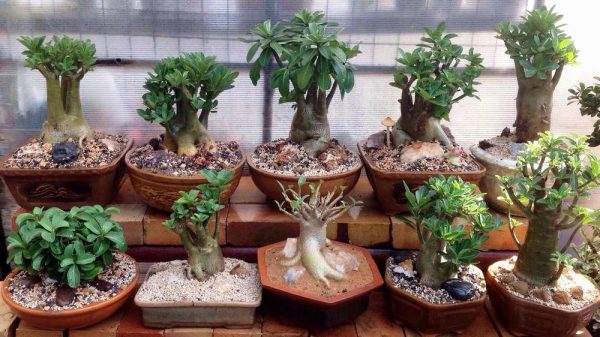
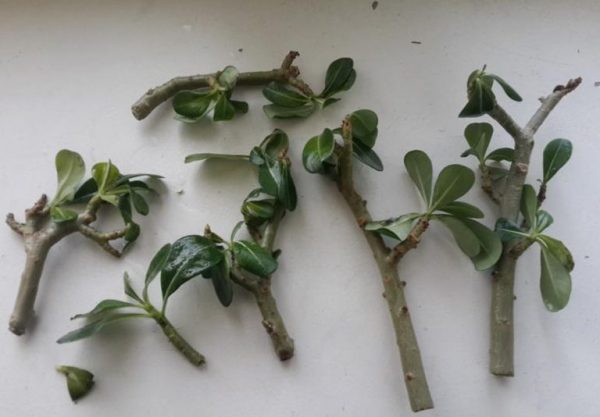
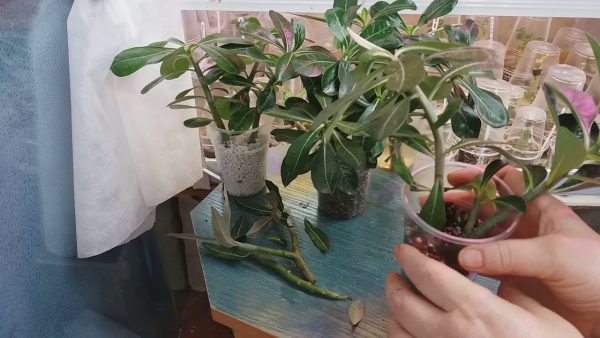
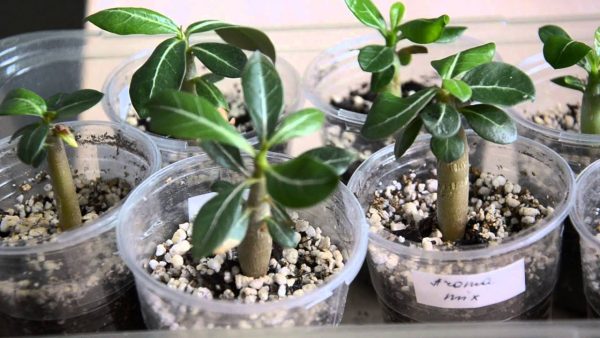
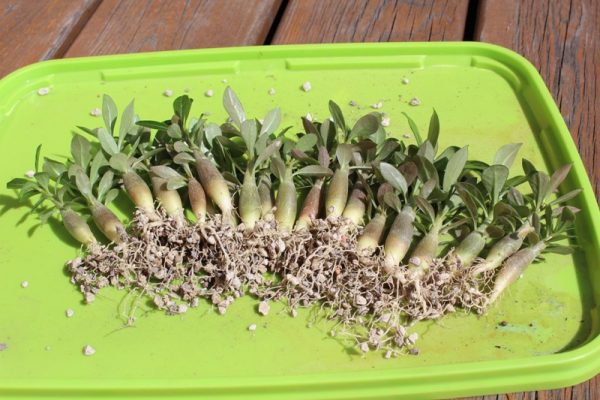
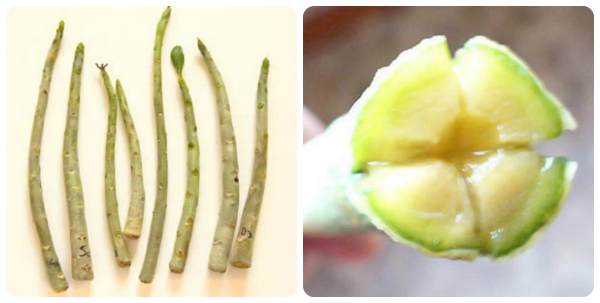
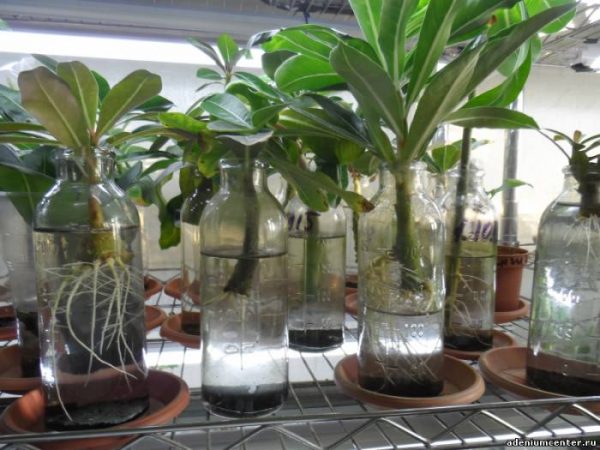

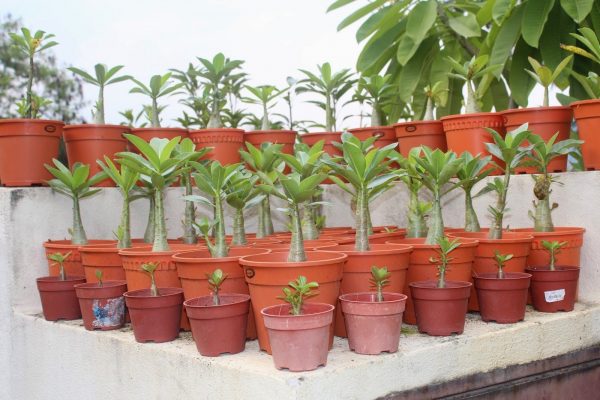


 CUCUMBERS NEVER GET SICK, I'VE BEEN USING ONLY THIS FOR 40 YEARS! I SHARE A SECRET WITH YOU, CUCUMBERS ARE LIKE THE PICTURE!
CUCUMBERS NEVER GET SICK, I'VE BEEN USING ONLY THIS FOR 40 YEARS! I SHARE A SECRET WITH YOU, CUCUMBERS ARE LIKE THE PICTURE! You can dig a bucket of potatoes from each bush. Do you think these are fairy tales? Watch the video
You can dig a bucket of potatoes from each bush. Do you think these are fairy tales? Watch the video
 How our fellow gardeners work in Korea. There is a lot to learn and just fun to watch.
How our fellow gardeners work in Korea. There is a lot to learn and just fun to watch. Eye trainer. The author claims that with daily viewing, vision is restored. They don't charge money for views.
Eye trainer. The author claims that with daily viewing, vision is restored. They don't charge money for views. A 3-ingredient cake recipe in 30 minutes is better than Napoleon. Simple and very tasty.
A 3-ingredient cake recipe in 30 minutes is better than Napoleon. Simple and very tasty. Therapeutic exercises for cervical osteochondrosis. A complete set of exercises.
Therapeutic exercises for cervical osteochondrosis. A complete set of exercises. Which indoor plants match your zodiac sign?
Which indoor plants match your zodiac sign? What about them? Excursion to German dachas.
What about them? Excursion to German dachas.